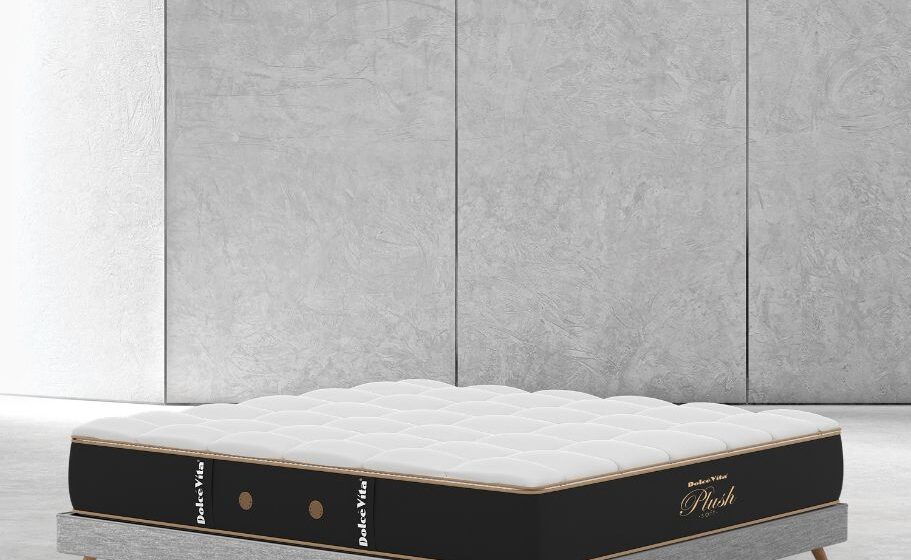Memory foam mattresses have become very popular recently. Thanks to their ability to adapt to all body shapes, they are often recommended for people who suffer from back or neck pain. More than that, they guarantee optimal sleeping comfort! But how do you choose a memory foam mattress exactly? What are the criteria to pay attention to? How to combine ecology, savings and quality? We have gathered for you everything you need to know about these tailor-made mattresses!
What Exactly Is A Memory Foam Single Mattress?
Memory foam single mattresses are part of the very high-end section of bedding. They are made of viscoelastic and thermosensitive foam, the density and thickness of which vary depending on the model.
Since memory foam reacts to weight and heat, it is able to soften to gradually adopt the exact shape of the sleepers’ bodies and follow their movements during the night. It is called “memory foam” because it has the particularity of returning to its initial shape when no one is lying on the single mattress.
For the record, memory foam was invented in the 1960s by engineers at NASA, the United States organization dedicated to space research. The goal was twofold: on the one hand, to try to minimize as much as possible the shocks and pressure suffered by astronauts during takeoffs and landings. On the other hand, to ensure that astronauts are as comfortable as possible in their seats during their (very long) trips.
Today, memory foam can cover any type of mattress: spring, latex, foam, etc. Most of the time, the memory foam layer is present on both sides of the single mattress, to allow sleepers to turn it over. But be careful, this is not systematic! So remember to check this point carefully before purchasing.
Why Choose A Memory Foam Mattress?
The main advantage of memory foam mattresses is that they offer real tailor-made bedding (see our memory foam mattresses). As it adapts perfectly to the sleeper’s silhouette, memory foam offers a soft and enveloping bed. It is also an ideal option for couples, since it is possible to move all night without disturbing the other, and conversely to sleep without being woken up by unexpected movements, which are absorbed by the foam.
The other big advantage of memory foam is its ability to relieve pressure points on the body, making it a particularly popular mattress for people looking for good spinal support and distribution of body weight across the various support points. With memory foam mattresses, your body maintains its natural position, which allows your muscles to relax. Result: you wake up perfectly relaxed and without any lower back pain!
Finally, memory foam is known for its durability and longevity, as well as its antibacterial, anti-mite and hypoallergenic properties.
Be careful: memory foam mattresses are not suitable for everyone! This is particularly the case for people who sweat a lot at night. More than ever, it is advisable to try before buying these mattresses.
How To Maintain A Memory Foam Mattress?
Memory foam is a special material; as a result, its maintenance may be different from that of other types of mattresses.
The first thing to do to properly maintain your memory foam mattress is to air your room for at least thirty minutes every day, making sure to push back the duvet to air the bed at the same time. It is also advisable to turn the mattress regularly if you can (about once every three months).
To clean it, you can safely vacuum it and use baking soda (powder) or dishwashing liquid (but don’t get the mattress too wet!) to remove stains. Never use corrosive products like bleach or ammonia, which could irreversibly damage the foam.
Finally, keep in mind that memory foam is very sensitive to heat. The higher the temperature in your room, the softer the mattress is likely to be; the lower the temperature, the firmer the mattress will be! To get the most out of memory foam, it is recommended to keep the room temperature between 18 and 22°C.
How to choose a memory foam mattress? To find the memory foam mattress that meets all your requirements, we advise you to pay particular attention to three criteria:
The density of the mattress: as a general rule, memory foam has a density between 40 and 60 kg/m³. The higher the density, the longer the lifespan of the mattress!
The support of the mattress: this corresponds to the feeling of firmness that you experience when lying on it. This criterion is mainly a matter of personal preference, but people with back pain are generally advised to choose a firm mattress that supports the spine well.
The thickness of the mattress: generally, memory foam mattresses are not made of 100% viscoelastic foam. They are often supplemented with layers of HD foam or latex, for example. You should know that to be able to obtain the name “memory foam mattress“, the core of the viscoelastic foam mattress must measure at least 7 cm. If the thickness is less than 7 cm, it is then a mixed mattress.



